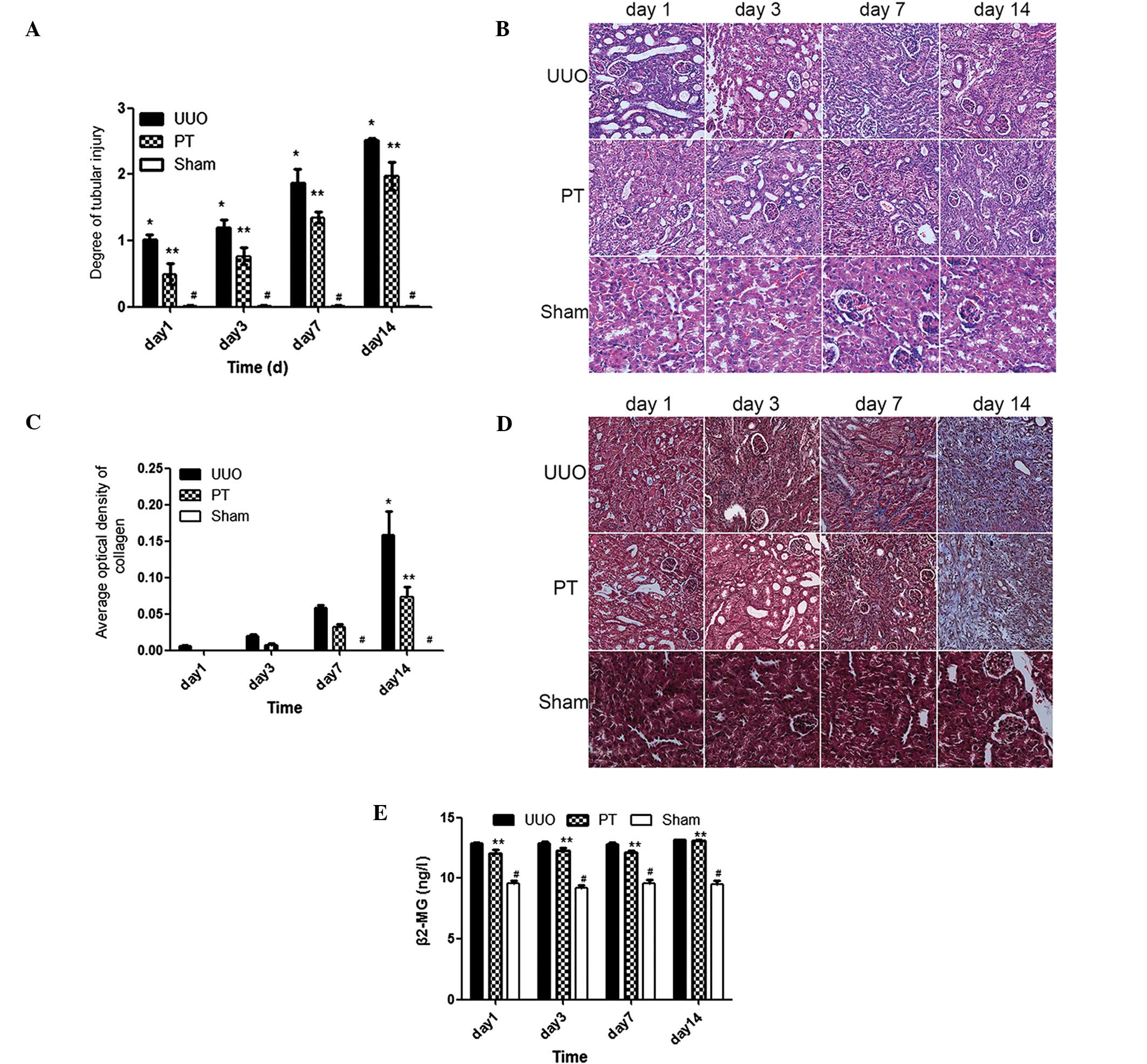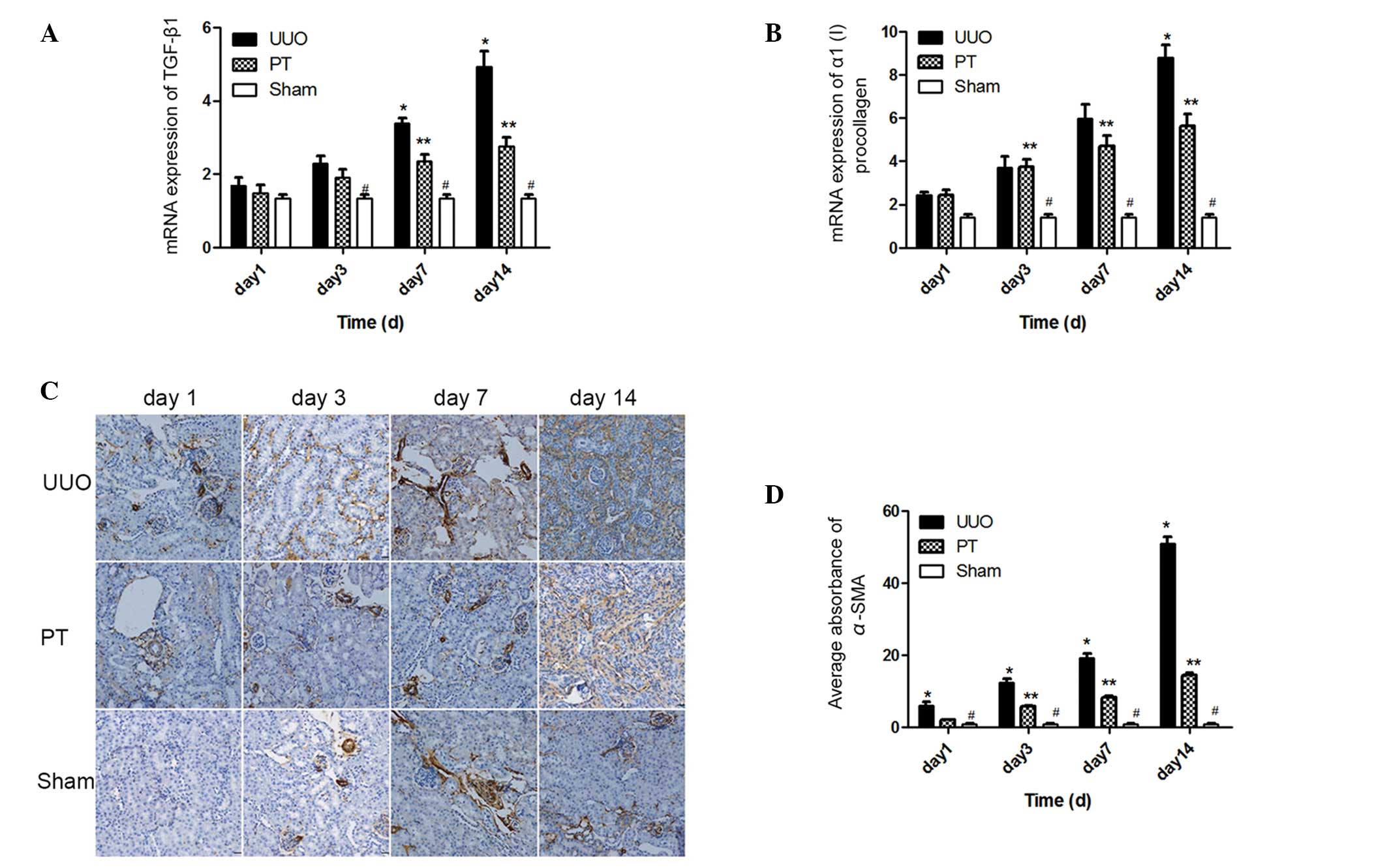|
1
|
Suzuki K, Wang R, Kubota H, Shibuya H,
Saegusa J and Sato T: Kinetics of biglycan, decorin and
thrombospondin-1 in mercuric chloride-induced renal
tubulointerstitial fibrosis. Exp Mol Pathol. 79:68–73. 2005.
View Article : Google Scholar : PubMed/NCBI
|
|
2
|
Fredholm BB: Adenosine, an endogenous
distress signal, modulates tissue damage and repair. Cell Death
Differ. 14:1315–1323. 2007. View Article : Google Scholar : PubMed/NCBI
|
|
3
|
Eltzschig HK, Thompson LF, Karhausen J, et
al: Endogenous adenosine produced during hypoxia attenuates
neutrophil accumulation: coordination by extracellular nucleotide
metabolism. Blood. 104:3986–3992. 2004. View Article : Google Scholar : PubMed/NCBI
|
|
4
|
Lasley RD, Rhee JW, Van Wylen DG and
Mentzer RM Jr: Adenosine A1 receptor mediated protection of the
globally ischemic isolated rat heart. J Mol Cell Cardiol. 22:39–47.
1990. View Article : Google Scholar : PubMed/NCBI
|
|
5
|
Fishman P, Bar-Yehuda S, Farbstein T,
Barer F and Ohana G: Adenosine acts as a chemoprotective agent by
stimulating G-CSF production: a role for A1 and A3 adenosine
receptors. J Cell Physiol. 183:393–398. 2000. View Article : Google Scholar : PubMed/NCBI
|
|
6
|
Linden J: Adenosine in tissue protection
and tissue regeneration. Mol Pharmacol. 67:1385–1387. 2005.
View Article : Google Scholar : PubMed/NCBI
|
|
7
|
Lu B, Rajakumar SV, Robson SC, et al: The
impact of purinergic signaling on renal ischemia-reperfusion
injury. Transplantation. 86:1707–1712. 2008. View Article : Google Scholar : PubMed/NCBI
|
|
8
|
Hatfield S, Belikoff B, Lukashev D,
Sitkovsky M and Ohta A: The antihypoxia-adenosinergic pathogenesis
as a result of collateral damage by overactive immune cells. J
Leukoc Biol. 86:545–548. 2009. View Article : Google Scholar : PubMed/NCBI
|
|
9
|
Dai Y, Zhang W, Wen J, Zhang Y, Kellems RE
and Xia Y: A2B adenosine receptor-mediated induction of IL-6
promotes CKD. J Am Soc Nephrol. 22:890–901. 2011. View Article : Google Scholar : PubMed/NCBI
|
|
10
|
Grenz A, Baier D, Petroktistis F, et al:
Theophylline improves early allograft function in rat kidney
transplantation. J Pharmacol Exp Ther. 317:473–479. 2006.
View Article : Google Scholar : PubMed/NCBI
|
|
11
|
Sobh M, Sabry A, Moustafa F, Foda MA,
Sally S and Ghoneim M: Effect of colchicine on chronic ciclosporin
nephrotoxicity in Sprague-Dawley rats. Nephron. 79:452–457. 1998.
View Article : Google Scholar : PubMed/NCBI
|
|
12
|
Mizuguchi Y, Miyajima A, Kosaka T, Asano
T, Asano T and Hayakawa M: Atorvastatin ameliorates renal tissue
damage in unilateral ureteral obstruction. J Urol. 172:2456–2459.
2004. View Article : Google Scholar : PubMed/NCBI
|
|
13
|
Liu C, Ding X, Zhu J, Fu C and Zhong Y:
Preliminary study of the role of hypoxia in the ligated kidney of
unilateral ureteral obstruction rat model. Fudan University Journal
of Medical Sciences. 34:732–736. 2007.(In Chinese).
|
|
14
|
Coresh J, Astor BC, Greene T, Eknoyan G
and Levey AS: Prevalence of chronic kidney disease and decreased
kidney function in the adult US population: Third National Health
and Nutrition Examination Survey. Am J Kidney Dis. 41:1–12. 2003.
View Article : Google Scholar
|
|
15
|
Zhang L, Zhang P, Wang F, et al:
Prevalence and factors associated with CKD: a population study from
Beijing. Am J Kidney Dis. 51:373–384. 2008. View Article : Google Scholar : PubMed/NCBI
|
|
16
|
Hewitson TD: Renal tubulointerstitial
fibrosis: common but never simple. Am J Physiol Renal Physiol.
296:F1239–1244. 2009. View Article : Google Scholar : PubMed/NCBI
|
|
17
|
Fine LG, Orphanides C and Norman JT:
Progressive renal disease: the chronic hypoxia hypothesis. Kidney
Int Suppl. 65:S74–78. 1998.PubMed/NCBI
|
|
18
|
Fine LG, Bandyopadhay D and Norman JT: Is
there a common mechanism for the progression of different types of
renal diseases other than proteinuria? Towards the unifying theme
of chronic hypoxia. Kidney Int Suppl. 75:S22–26. 2000. View Article : Google Scholar : PubMed/NCBI
|
|
19
|
Fine LG and Norman JT: The breathing
kidney. J Am Soc Nephrol. 13:1974–1976. 2002. View Article : Google Scholar : PubMed/NCBI
|
|
20
|
Liu Y: Renal fibrosis: new insights into
the pathogenesis and therapeutics. Kidney Int. 69:213–217. 2006.
View Article : Google Scholar : PubMed/NCBI
|
|
21
|
Li J, Zhang Z, Wang D, Wang Y, Li Y and Wu
G: TGF-beta 1/Smads signaling stimulates renal interstitial
fibrosis in experimental AAN. J Recept Signal Transduct Res.
29:280–285. 2009. View Article : Google Scholar : PubMed/NCBI
|
|
22
|
Phanish MK, Wahab NA, Colville-Nash P,
Hendry BM and Dockrell ME: The differential role of Smad2 and Smad3
in the regulation of pro-fibrotic TGFbeta1 responses in human
proximal-tubule epithelial cells. Biochem J. 393:601–607. 2006.
View Article : Google Scholar :
|
|
23
|
van Kleef EM, Zurcher C, Oussoren YG, et
al: Long-term effects of total-body irradiation on the kidney of
Rhesus monkeys. Int J Radiat Biol. 76:641–648. 2000. View Article : Google Scholar : PubMed/NCBI
|
|
24
|
Iwano M, Plieth D, Danoff TM, Xue C, Okada
H and Neilson EG: Evidence that fibroblasts derive from epithelium
during tissue fibrosis. J Clin Invest. 110:341–350. 2002.
View Article : Google Scholar : PubMed/NCBI
|












